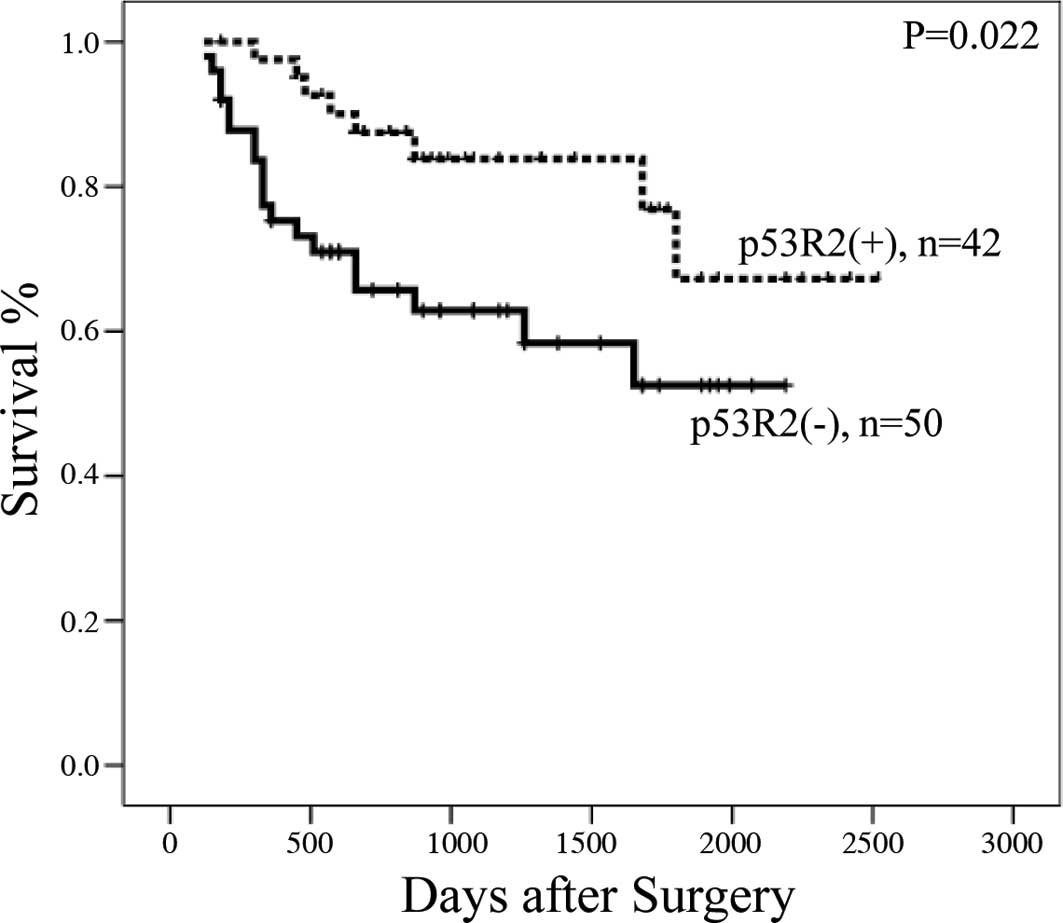|
1
|
Montain C: Revision in the International
System for Staging Lung Cancer. Chest. 111:1710–1717. 1997.
View Article : Google Scholar : PubMed/NCBI
|
|
2
|
WHO. The World Health Organization
histological typing of lung tumors. Am J Clin Pathol. 77:123–136.
1982.
|
|
3
|
Reichard P: Ribonucleotide reductases: the
evolution of allosteric regulation. Arch Biochem Biophys.
397:149–155. 2002. View Article : Google Scholar : PubMed/NCBI
|
|
4
|
Tanaka H, Arakawa H, Yamaguchi T, et al: A
ribonucleotide reductase gene involved in a p53-dependent
cell-cycle checkpoint for DNA damage. Nature. 404:42–49. 2000.
View Article : Google Scholar : PubMed/NCBI
|
|
5
|
Cerqueira N, Pereira S, Fernandes PA and
Ramos MJ: Overview of ribonucleotide reductase inhibitors: an
appealing target in anti-tumour therapy. Curr Med Chem.
12:1283–1294. 2005. View Article : Google Scholar : PubMed/NCBI
|
|
6
|
Shao J, Zhou B, Zhu L, et al: In vitro
characterization of enzymatic properties and inhibition of the
p53R2 subunit of human ribonucleotide reductase. Cancer Res.
64:1–6. 2004. View Article : Google Scholar : PubMed/NCBI
|
|
7
|
Guittet O, Hakansson P, Voevodskaya N, et
al: Mammalian p53R2 protein forms an active ribonucleotide
reductase in vitro with the R1 protein, which is expressed both in
resting cells in response to DNA damage and in proliferating cells.
J Biol Chem. 276:40647–4051. 2001. View Article : Google Scholar
|
|
8
|
Piao C, Lin M, Kim HB, et al:
Ribonucleotide reductase small subunit p53R2 suppresses MEK-ERK
activity by binding to ERK kinase 2. Oncogene. 28:2173–2184. 2009.
View Article : Google Scholar : PubMed/NCBI
|
|
9
|
Link PA, Baer MR, James SR, et al:
p53-inducible ribonucleotide reductase (p53R2/RRM2B) is a DNA
hypomethylation-independent decitabine gene target that correlates
with clinical response in myelodysplastic syndrome/acute
myelogenous leukemia. Cancer Res. 68:9358–9366. 2008. View Article : Google Scholar
|
|
10
|
Liu X, Zhou B, Xue L, et al:
Metastasis-suppressing potential of ribonucleotide reductase small
subunit p53R2 in human cancer cells. Clin Cancer Res. 12:6337–6344.
2006. View Article : Google Scholar : PubMed/NCBI
|
|
11
|
Furuta E, Okuda H, Aya K and Watabe K:
Metabolic genes in cancer: the role in tumor progression and
clinical implications. Biochim Biophys Acta. 1805:141–152.
2010.
|
|
12
|
Xu X, Page JL, Surtees JA, et al: Broad
overexpression of ribonucleotide reductase genes in mice
specifically induces lung neoplasms. Cancer Res. 68:2652–2660.
2008. View Article : Google Scholar : PubMed/NCBI
|
|
13
|
Uramoto H, Sugio K, Oyama T, et al: P53R2,
p53 inducible ribonucleotide reductase gene, correlated with tumor
progression of non-small cell lung cancer. Anticancer Res.
25:983–988. 2006.PubMed/NCBI
|
|
14
|
Okumura H, Natsugoe S, Yokomalura N, et
al: Expression of p53R2 is related to prognosis in patients with
esophageal squamous cell carcinoma. Clin Cancer Res. 12:3740–3744.
2006. View Article : Google Scholar : PubMed/NCBI
|
|
15
|
Yanamoto S, Kawasaki G, Yamada S, et al:
Ribonucleotide reductase small subunit p53R2 promotes oral cancer
invasion via the E-cadherin/beta-catenin pathway. Oral Oncol.
45:521–525. 2009. View Article : Google Scholar : PubMed/NCBI
|
|
16
|
Liu X, Zhou B, Xue L, et al:
Ribonucleotide reductase subunits M2 and p53R2 are potential
biomarkers for metastasis of colon cancer. Clin Colorectal Cancer.
6:374–381. 2007. View Article : Google Scholar : PubMed/NCBI
|
|
17
|
Zhou BS, Tsai P, Ker R, et al:
Overexpression of transfected human ribonucleotide reductase M2
subunit in human cancer cells enhances their invasive potential.
Clin Exp Metastasis. 16:43–49. 1998. View Article : Google Scholar : PubMed/NCBI
|
|
18
|
Fan H, Villegas C and Wright JA:
Ribonucleotide reductase R2 component is a novel malignancy
determinant that cooperates with activated oncogenes to determine
transformation and malignant potential. Proc Natl Acad Sci USA.
93:14036–14040. 1996. View Article : Google Scholar
|
|
19
|
Fan H, Huang A, Villegas C and Wright JA:
The R1 component of mammalian ribonucleotide reductase has
malignancy-suppressing activity as demonstrated by gene transfer
experiments. Proc Natl Acad Sci USA. 94:13181–13186. 1997.
View Article : Google Scholar : PubMed/NCBI
|











